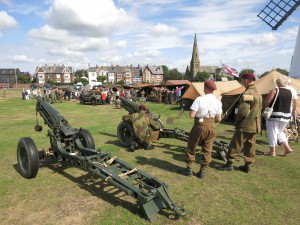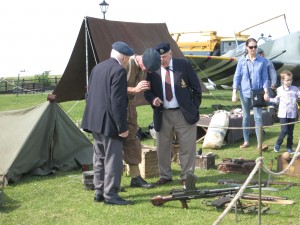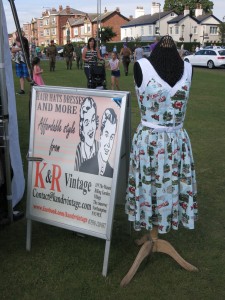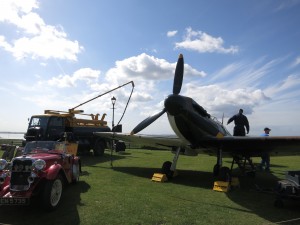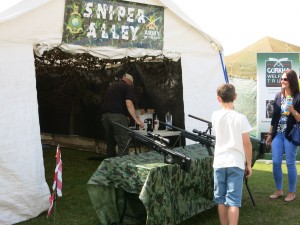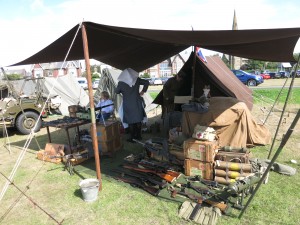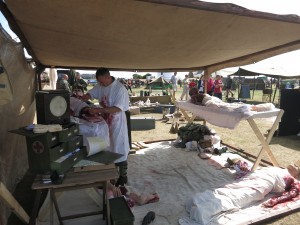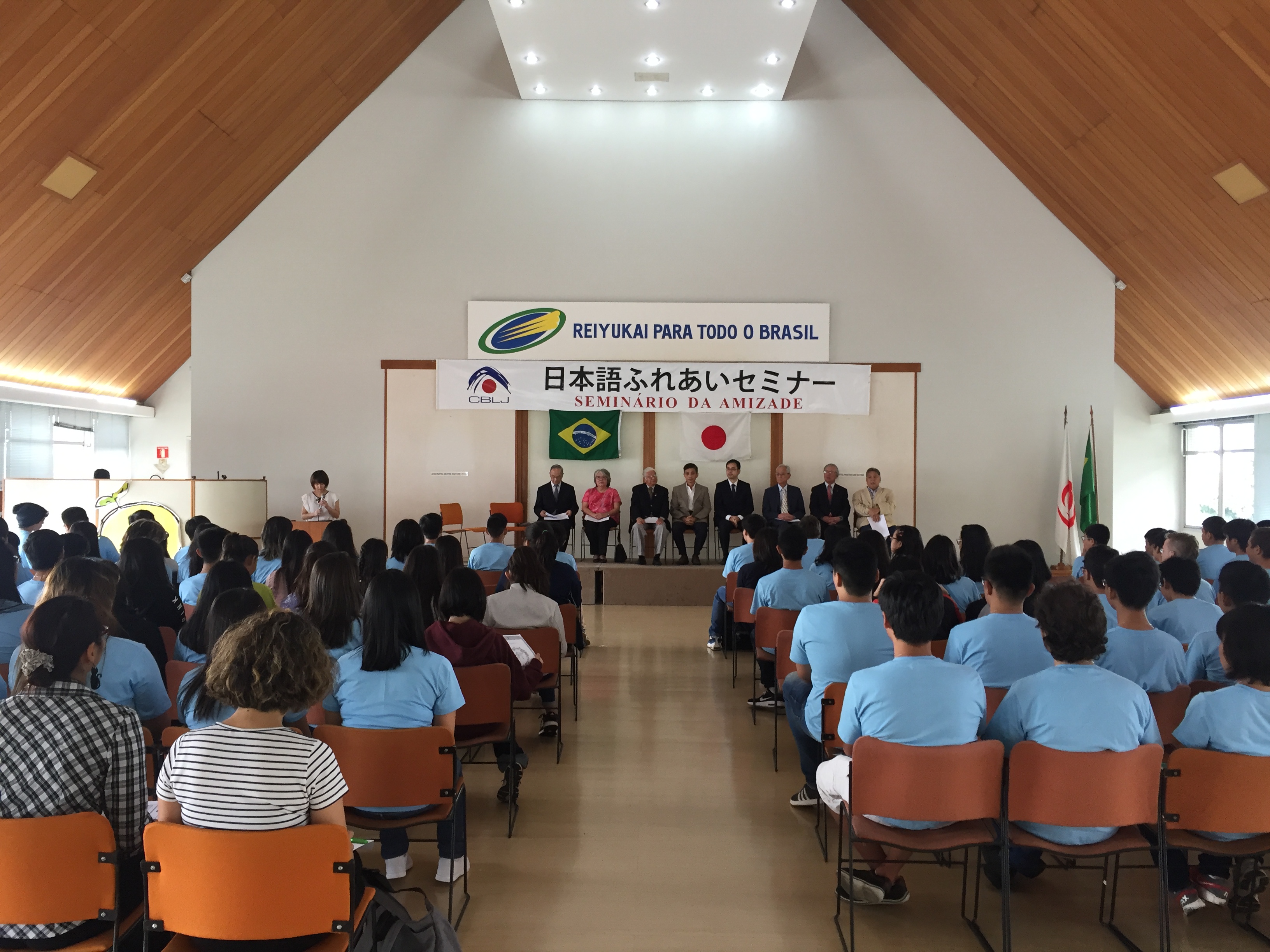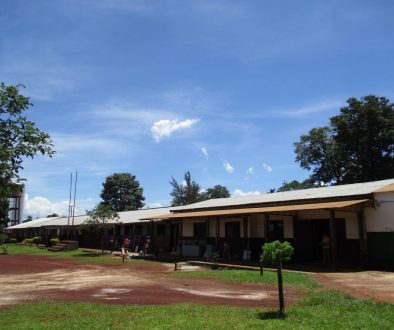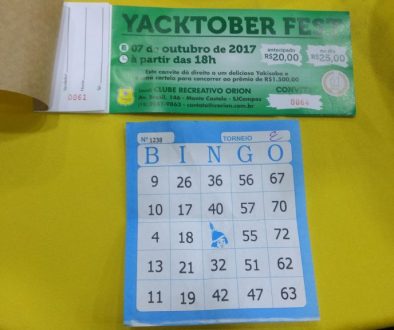イギリス・ブログ 第二次世界大戦の捉え方(3) Blog from UK Understanding toward the WW2(3)
Language言語: English/日本語
On the 16th of Aug, the weather improved and I popped in the Lytham 1940s War Time Festival.
8月16日、お天気は昨日よりもよくなり、気持ちの良い午後に、リズムの1940年代戦争時をテーマにしたフェスティバルに寄ってみた。
Paul indicated that battle re-enactment field was divided from the commercial area. What is commercial area in terms of 1940s? First, I walked along glancing the whole stalls and tents; they were selling fashionable dresses, fancy hats and accessaries in 1940s, so as soldier’s uniforms, helmets, etc. The music in the war time perhaps was played in the large tent, too. Ok, all these markets looked very familiar as a festival. Somthing people can have fun.
そういえば、ポールさんが戦闘の再現する場所と「営利目的」のエリアとは区別されているといっていた。1940年代をテーマにした「営利目的」のエリアとは何だろう。まずは、全体の屋台やテントをざっと歩いてみる。屋台やテントでは当時の流行だった女性のドレス、飾りのついた帽子やアクセサリーを売っていたり、兵士の軍服やヘルメットまであった。大きなテントでは当時のものと思われる音楽もかけられている。なるほど、屋台エリアはお祭りっぽい。来場者が楽しめる感じだ。
In the opposite side of the area, I saw series of war time airplanes and jeeps, old fashioned vehicles. Also, at some tents, children were able to shoot the target.
同じ場所の反対側には、戦争当時の飛行機やジープ、古めかしい形の乗り物が飾ってある。それから、いくつかのテントでは子どもたちが射的ができるようにもなっている。
Walking on, the other end of the commercial area, there were vintage cars displayed, owners were having a picnic behind their cars, of course, dressed in 1940s fashion. They all looked relaxed and proud of their cars.
ずっと歩いて、営利目的エリアの反対側までいくと、今度は同じ乗り物でも年代もののクラシックカーが展示されていて、それぞれの車の持ち主たちが後ろでピクニックをしている、もちろん、1940年代のファッションに身を包んで。集まった人たちはみなのんびりと構え、車の持ち主たちはちょっと自慢気な様子だった。
Then, next area, where Paul mentioned the field for battle re-enactment. Nearer the windmill, the symbol of this town, there were flows of tents set up.
それから次のエリアへと足を踏み入れた、ポールさんが戦闘を再現するためのフィールドといっていたところだ。この町のシンボルとなっている風車に近づくとそこには何列にもテントが設営されていた。
Looking closely what they displayed at the tents; old weapons, guns and gas masks, all sorts of what they should have had in the battle field. Then, there were people dressed in soldiers obviously, and nurses and doctors as well. After the battle, of course, there were medical people who helped wounded soldiers.
テントに何が展示されているのかをよく見てみると、昔の武器、銃やガスマスク、戦場にあっただろう当時のあらゆるものがあった。それから、もちろん、兵士の服に身を包んでいる人はたくさんいたが、加えて、看護婦さんやお医者さんたちの姿もある。戦闘のあと、もちろん、そこには負傷した兵士を助ける医療従事者たちもいたわけだ。
The wounded soldiers with blood all over, in other words, dolls with heavily poured red ink. The living doctor was seriously stitching parts of these doll’s body. At this tent, young children stopped and intensely gazed at what the doctor was doing. Certainly I stopped and watched at him, and the dolls, even sympasized them with flooded red ink, wet and speechlessly lying down.
血だらけの負傷した兵士たち、ぐっしょりと赤いインクがかけられた人形ではあるが。生きている医者は必死で針と糸で人形の体を縫い付けている。このテントでは小学生くらいの子どもたちが足を止め、お医者さんが何をしているのか目を凝らしていた。私も、この医師の手の先を凝視したが、同時に赤インクがかけられた人形だとは知りながら、何だか、ぐっしょり濡れて、言葉なく横たわり続けている人形の姿に同情せざるを得なかった。
So, the battle re-enactment may bring the whole issue of the war. Not only fighting at the battle, then what happened to the soldiers as well. When I walked away from the tent, the next thing I saw was the rows of graves in the battle field.
なるほど、戦闘の再現をするという活動は戦争のすべての問題を扱うということでもあるのか。戦場で戦うだけではなく、戦闘の後に兵士にどのようなことが起きるのかということも。このテントから離れて歩き出したとき、次に目にしたのは戦場の上に、列をなす墓だった。
